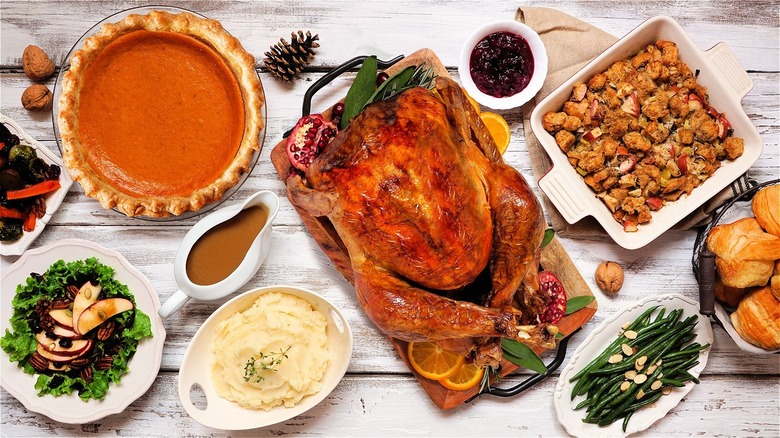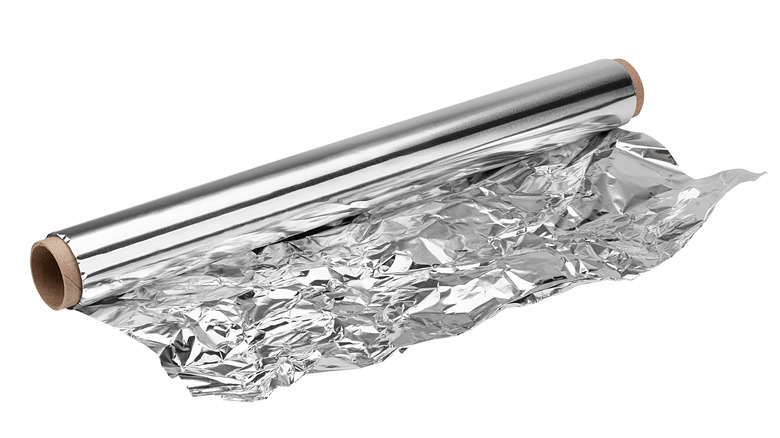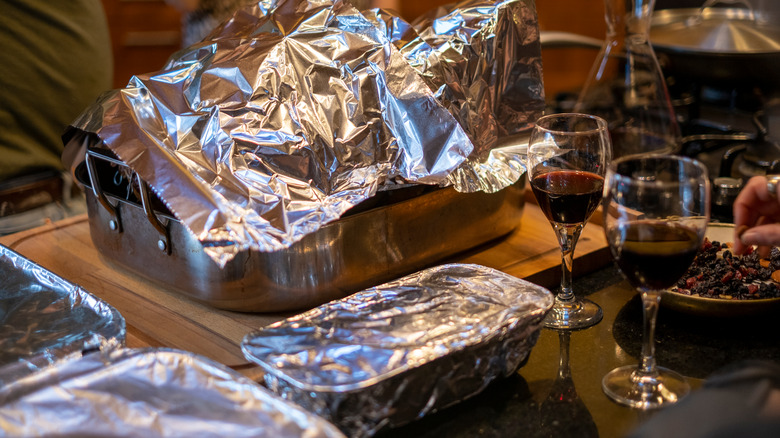The True Hero Of Your Thanksgiving Dinner, According To Butterball Experts
As soon as the last Halloween decorations are packed away, you know what that means — time to start thawing the turkey for Thanksgiving. Okay, maybe we're jumping the gun a bit, but it's not too soon to start planning what may be the year's biggest holiday meal. According to Finder, 88% of us will be gobbling down turkey as the main course. In 2019, this was estimated to be 292 million people sharing 46 million turkeys costing approximately $927 million. The average cost of a turkey keeps going up, too. Last Thanksgiving your typical turkey would run you $17.03, but now it's up to $20.15. With this kind of investment, you really don't want to mess things up, right?
Well, that's where the Butterball hotline comes in. The helpful folks at the nation's largest turkey producer have been talking people through their turkey troubles for the past 40 years. This year, however, they're branching out into new territory by launching the Turkey Talk-Line Taste Kitchen coming to you via TikTok. (Spoiler alert: No, you can't really roast an entire turkey in 30 seconds). While the turkey will always be the star of the show every Thanksgiving, in a behind-the-scenes peek the Butterball test kitchen staff shared with Mashed the true unsung hero of the day. Surprise, it's not a food at all!
Aluminum foil is a versatile Thanksgiving must-have
Aluminum foil is Thanksgiving's "unsung hero," according to Butterball. So what makes foil so heroic? Well, it can play several different roles in cooking the turkey, starting off as a substitute roasting rack. As Butterball Turkey Talk-Line Expert Andrea Balitewicz explains, a rack is a must-have since it allows the air and heat to circulate under the turkey and allow for even cooking. If you have no rack, though, no problem. Balitewicz suggests employing a "coil of foil" made by crunching up and creating a ring out of a long piece of foil. "What we do," the turkey expert tells us, "is place this in the bottom of our roasting pan, then what you could do is just nestle your turkey right on there, it lifts it up for that air flow then when you're done, you can just throw this away."
But wait, that's not all. Balitewicz also says that foil plays a crucial role in making sure the breast doesn't get overcooked, while the legs are still underdone. The expert advises placing a small piece of foil over the breast about 2/3 of the way through the cooking. That way, it won't be all dried out by the time the thighs reach Butterball's recommended 180 Fahrenheit. (A meat thermometer inserted in the breast should read 170 Fahrenheit, while if you're cooking the stuffing inside the bird she says it needs to reach 165 Fahrenheit).
Foil can help after the cooking is done
Once the turkey is done, foil still has a part to play. After you take the bird out of the oven, Balitewicz insists, "You have to let your turkey rest, it makes a big difference." The Butterball turkey expert suggests 20 to 30 minutes, as this will allow the juices to redistribute so the meat is juicier and easier to carve. In order to keep the turkey warm, though, Balitewicz advises wrapping it in foil as it rests. If you'll be leaving it for longer than half an hour, using a layer of foil and then a top layer of towels will keep the turkey warm for a good long while.
After the meal is over and it's time for the guests to go home, foil steps in yet again to save the day. Package up your leftovers, and send everyone off with a little something for tomorrow, as well! That way, they won't have any containers to wash and return.


